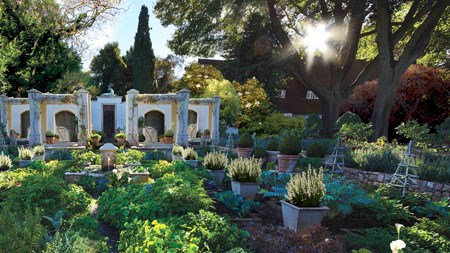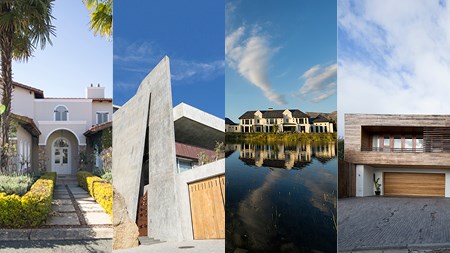While Joburg is readying itself for a new revolution, developments in the mother city continue apace. The big question is: where will they fit everything in?
- Johannesburg: A Phoenix Rising
Arguably once one of Johannesburg’s most notorious spaces, Ponte City and its surrounds are in the midst of a wave of rejuvenation and urban renewal that promise new hope in the inner city.
“It was the best of times, it was the worst of times.” Charles Dickens’ classic A Tale of Two Cities could well have been based on Johannesburg predemocracy. A revolution was brewing, catalysed as much by racial discrimination as it was by spatial segregation. Today, the city bears many of the scars of the past: automobile-prioritised public mobility, urban sprawl, race-based townships deliberately planted on the edges of the city, far from economic opportunities. The inner city has seen the exodus of middle-class residents as well as big business to suburbs such as Rosebank and Sandton, leaving an economic void and the opportunity for illegal occupation and the degeneration of infrastructure, safety and security. The sprawling and haphazard planning nature of Johannesburg has led to an urban-density pattern that is lower than many comparable cities: average densities within the metropolitan region indicate 521 persons per square kilometre.
But, according to the South African State of the Cities Report 2011, this resilient city is able to chart a different path in solving complex and unanticipated problems. It involves adapting and shaping development to improve the city’s position through structural change. To promote resilience through structural change, which will achieve greater equality in Johannesburg, the city form must be restuctured. The City of Johannesburg developed the Inner City Transformation Roadmap to escalate the inner city’s transformation. It recognises that the central role of the inner city is an entry point and a place of opportunity for many, including the poor.
The Johannesburg Development Agency (JDA) together with City of Johannesburg municipal departments, entities and the private sector need to deliver, extend and maintain services that are sustainable in the long term; to provide the social support and facilities that promote inclusivity and diversity; and to encourage productivity and the economic endeavours of large and small business. It can only be sustained with dedicated effort to maintain and repair the infrastructure that is the backbone of the built environment. And it is best achieved within neighbourhoods. This area-based focus is essential if we are to tackle issues in the inner city in a holistic way. The JDA delivers capital projects aimed at restructuring the space economy of the City of Johannesburg through a number of development initiatives…
Inner-city public places challenge
For 11 years the JDA has played a strategic role in investing municipal funds in capital-works projects that catalyse private investment in key areas in the inner city. In all JDA developments, a partnership with private property owners, investors, businesses and residents is integral to development. These collaborations are usually built around neighbourhood development plans with medium- to long-term delivery time frames. But there are examples of smaller partnership projects where the JDA has co-invested with private stakeholders within the framework of a management agreement within public space. The Main Street Mall is the most notable example, and the Joubert Street Market, Ekhaya Neighbourhood Park and sanitary lanes in Hillbrow and Berea boast elements of partnership.
In 2012/’13 the JDA committed to three cofunded public environment projects: one to upgrade the Braamfontein alleyways, in partnership with the Braamfontein Improvement District; one to upgrade streets in the Maboneng Precinct with property developer Propertuity; and one to upgrade streets in the Hotel Precinct with Lionshare Properties. The Hotel Precinct upgrade carries a price tag of about R2,5 million. The second-round call for proposals from private partners will define the scope of work for the rest of the Public Places Challenge expenditure in 2013/’14 as well as upgrading of sidewalks, streets, planting and parks, including lighting, cleaning and sustainable management of the Berea Neighbourhood, particularly around the Stay City area. These upgrades will assist in linking Stay City to the street between Lily and Tudhope, a new porte cochere.
Transnet land/ metro park
The Transnet Land/Metro Park project involves the development of a large-scale park along the railway line in the inner city through a phased approach, and the development of an international transit and shopping centre on a strategic site near to Park Station that is assembled from properties owned by the City of Johannesburg, Transnet and the South African Post Office. In 2013/’14 the complete allocation of R20 million was spent on purchasing land from Transnet for the Metro Park. Any remaining funds will be used to rehabilitate the Kazerne Parkade property after the building was demolished at the end of last year. The property development feasibility study will also be updated in light of current retail demand, space needs for the transit facility, and the projected returns.
African food and culture hub Executive Mayor of Johannesburg, Parks Tau, last year initiated the African Food and Culture Hub as a way to capture the public imagination through development in the inner city. He expressed a need to capitalise on the role of Park Station as a gateway to Africa by creating a welcoming public place that celebrates African food and culture. He described the ideal of Times Square in New York City as a popular gathering place.
This project aims to identify, brand and facilitate the development of a new public space that is surrounded by appropriate restaurants and shops that reflect a range of African cultures.
Rea vaya phase 1C
The Rea Vaya BRT system has assisted in making more accessible areas that were previously viewed as spatially dislocated. Following phase 1A and 1B of the Rea Vaya, the JDA on behalf of the City of Johannesburg is implementing phase 1C infrastructure, which will connect the inner city to Alexandra and the Sandton CBD. Construction will include a new bridge over the M1; an iconic new public-transport interchange at Watt Street in Alexandra; a dedicated walking and cycling bridge from No. 3 Square in Alexandra to Sandton Square in the Sandton CBD. In Alexandra, 30,2 kilometres of sidewalks, for walking and cycling, will be upgraded and improved; traffic-calming measures and street furniture along adjacent roads to the BRT and along feeder routes will also be introduced.
-David A Steynberg
- Cape Town: The devil’s in the detail
There’s a buzz of activity across Cape Town. On Adderley Street there’s been the rat-a-tat-tat of drills as the old war memorial is moved out and a new MyCiti bus stop moves in. Around the corner on Bree Street there’s the clank of scaffolding as another skyscraper goes up, while on Heerengracht there’s the flap of World Design Capital flags as the Naspers Building awaits a makeover.
But these developments in the CBD are just a small snapshot of a much bigger picture. On Walter Sisulu Avenue the International Convention Centre awaits the delayed launch of the City’s R4,5-billion urban-regeneration plan, while to the north near Melkbos and the south at Philippi debate rages about the regeneration of urban spaces and the degeneration of Cape Town’s farmlands.
The convention centre
When you look at Cape Town’s urban-regeneration plans, the CTICC is the best place to start – despite, or perhaps because of, its behind-the-scenes dramas. In 2012 it announced the launch of a massive R700-million expansion project, which would almost double its size, kickstarting a redeveloped Foreshore precinct that would cover 10 000m2 of retail space, a hospital, hotel and an office tower. At the time, the business case for the expansion pointed to R4,5-billion worth of construction and development opportunities and the creation of 8 000 new jobs annually by 2018.
‘I launched Project Regeneration to leverage our existing assets as a platform for new growth,’ then-Minister for Transport and Public Works Robin Carlisle added. ‘Regeneration is about unlocking Cape Town and the Province’s potential to transform into an agile, diverse, technologically astute, globally connected and socially inclusive space that encourages a sustainable, entrepreneurial culture, provides a hospitable and inspiring place for socially mixed communities, and attracts major business investments.’
Cue rounds of applause, huge excitement… and the inevitable tender scandal. Two years on, this past March, the City Council approved the R550- million purchase of shares to go towards funding the CTICC expansion (now set for completion in 2017), despite protest from opposition councillors and accusations of irregularities.
The stop-start story of the CTICC expansion fits in with the broader narrative of the City’s urban redevelopment: plans are announced, developments hit a snag (for one reason or another), and work slows down while other projects continue. Case in point: while the CTICC stood still, the MyCiti bus routes around it expanded rapidly, with passenger numbers growing 89% between November 2013 and February 2014.
WesCape mini-city
There’s a similar story north of the city, on the proposed site of the R140-billion WesCape mini-city between Melkbosstrand and Atlantis. On the face of it, WesCape will address the City’s immediate ecological, social and economic sustainability issues. (Cape Town has, according to some estimates, a 400 000 housing backlog.) But critics – and there are many – argue that the WesCape development would redraw the City’s spatial-development boundaries, encompassing lands on the Cape Farms area and leapfrogging to 25 kilometres away from Cape Town’s urban centre. And, besides, the development lies within the Koeberg Nuclear Power Station’s red zone –if disaster strikes, more than 800 000 people would have to be evacuated within 16 hours.
Despite the protests, in January Minister of Local Government, Environmental Affairs and Development Planning, Anton Bredell, approved the amendment of the City’s Spatial Development Framework, adjusting the City’s Urban Edge to include the land earmarked for WesCape within this hypothetical boundary. ‘It is important to accept that the proposed development falls within a long-term (20 to 30 years) category of land-use planning,’ Bredell argued. ‘There is therefore a timing issue [phasing] that will be addressed in the Land Use Planning Ordinance rezoning and subdivision [and EIA] applications. The application for the amendment of the Spatial Development Framework should be viewed through this longer term lens.’ Construction could now start as soon as early 2016.
Philippi green belt
The so-called Philippi Green Belt is turning into another spatial development battleground, with the City proposing to hand over almost 300 hectares of agricultural area between Mitchell’s Plain and Lotus River to private housing developers. It’s another attempt to redraw the City’s ‘Urban Edge’, and it’s another source of contention.
The 3 200 hectares designated for agricultural/ horticultural use in Philippi has already been chipped away to just under 2 400 hectares since 1998 – and in mid-2013 the Mayoral Committee (Mayco) said it would support a further rezoning application, because of the ‘massive demand for housing’ in the city.
And so it goes… Whether it’s urban regeneration in the form of the CTICC or spatial development in the form of WesCape, the Mother City keeps on butting its head against one obstacle or another. It’s probably not practical to build a city outside the city and in the shadow of a nuclear reactor.
It’s definitely not good news that the city’s showpiece convention centre became tied up in dodgy paperwork. And as small-scale farmers in Philippi fight to keep the bricks-and-mortar men at bay, there’s a measure of hope for them in the form of the City’s zoning map. But plans change. And as the hum of construction continues across the city, there’s an air of inevitability to it all. In Cape Town, progress can’t be stopped.
-Will Sinclair





